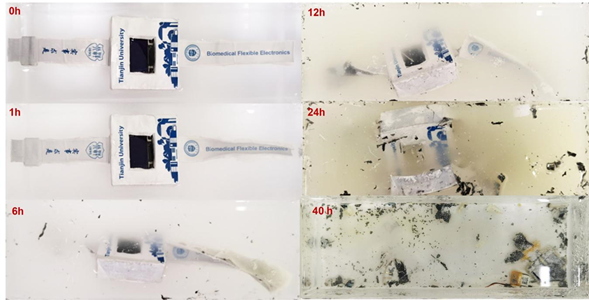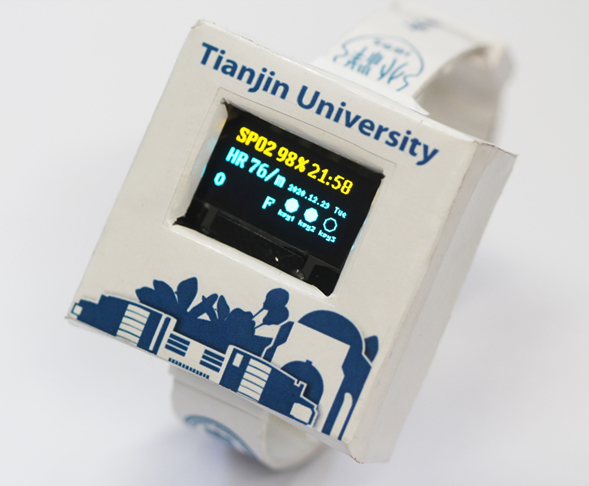With the rapid development of electronic technology, there has been an explosive growth in global electronic products, making the disposal of electronic waste increasingly challenging. Unscientific disposal methods can produce harmful substances such as polychlorinated biphenyls, polybrominated biphenyls, polyvinyl chloride, lead, cadmium, and mercury, leading to severe environmental pollution and health issues.Professor Huang Xian’s team from the Department of Biomedical Engineering at Tianjin University of Technology has developed a dissolvable smartwatch, providing a new solution for the harmless disposal of electronic waste.

In the laboratory of the School of Precision Instruments and Optoelectronics Engineering at Tianjin University, reporters saw the newly developed dissolvable smartwatch. This smartwatch, like traditional smartwatches, is equipped with sensors that can accurately measure heart rate, blood oxygen levels, and steps, and it connects via Bluetooth to transmit this data to a mobile application. It features an organic light-emitting diode (OLED) screen that displays the date, time, and messages from the connected phone.However, unlike ordinary smartwatches, when this smartwatch is fully submerged in water, its casing and circuits will completely dissolve within 40 hours, leaving only reusable components such as the OLED screen, resistors, and capacitors.
Huang Xian explained that this dissolvable smartwatch is actually a type of transient electronic device. That is, when electronic functional devices achieve their designated functions or complete a task, their physical form and functionality can partially or completely self-destruct under external stimuli. For this smartwatch, water serves as the stimulus, causing it to dissolve.

This transient electronic dissolvable material not only maintains conductivity comparable to conventional silver conductive materials but also achieves mild sintering at room temperature, significantly reducing costs and enhancing scalability. Additionally, Huang Xian mentioned that: this new material has good biocompatibility and can dissolve within the body, allowing implanted devices to disappear after fulfilling their functions, indicating broad prospects for biomedical applications. However, rest assured, sweat cannot dissolve it.
According to relevant data, electronic waste contains a large amount of precious metals such as gold, silver, platinum, cobalt, and indium, but due to high recycling costs and difficulties, the recycling rate has stagnated. In 2019, over 53.6 million tons of electronic waste were generated, yet the recycling rate was only 2%. The new material developed by Huang’s team is a room-temperature water-sintered nanocomposite for wire interconnection, allowing electronic products made from this material to be stable under normal usage conditions. When they need to be discarded, simply placing the electronic products in water will degrade them within a few days, allowing components like chips to be recovered for reuse, achieving pollution-free and rapid recycling of electronic products. This provides a new approach to solving electronic waste.
(Reported by Liu Qian and Chen Jianqiang, with correspondent Zhao Hui from Guangming Daily)
Source: Guangming Daily reporters Liu Qian and Chen Jianqiang, correspondent Zhao HuiEditor: Wang ZimoEditing: Zhang Xueyu Sun Dai Sun Xiaoting